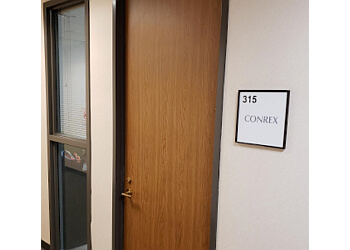
PMI Property Management is a full service, locally owned property management company. The company offers professional services including tenant relations, property management, collections and leasing fees as well as efficient advertising and marketing techniques. PMI, which manages more than 15 billion dollars in assets, has a strong reputation as one the most respected property management companies in the nation.
Private Mortgage Insurance is a type insurance that protects lenders in the event of default on the loan. The type of loan will determine the monthly payment. It will usually cost between 0.1 % and 2% of total loan amount. If you can't afford this extra fee, you may want to consider a loan with a lower interest rate or another option that is less costly than a conventional mortgage with PMI.
If you want to avoid paying PMI, you should try making a down payment of at least 20 percent of the home's purchase price. This amount is based on the current value of the house. When you make a down payment, you automatically build equity. As home prices rise, you will also build equity. If you have at least 20% equity, then you can ask for the cancellation of your PMI plan.

The Internal Revenue Service lets you deduct your PMI payments from your taxes. But there are some limits to this deduction. For example, it has not been extended by the IRS to 2022. However, you can still receive a tax deduction if your annual PMI costs are less than 10 percent of your adjusted gross income.
A house purchase with little or no down payment is risky. Monthly payments may be higher than what the home is worth and you could end-up owing more. Most lenders require private mortgage insurance. It covers the lender in case you default on the loan.
One alternative to PMI is piggybacking. Piggybacking is a way to split your loan into an 80/10/10. The first loan is for 80% of the property's total value, and the second loan pays 10%.
Another alternative to PMI is a single-premium policy. Single-premium insurance policies are due in full at the closing. You can combine the insurance costs into one payment if the loan balance is paid off.

The general rule is that the lower the down payment on a home, you pay more interest. There are many down payment assistance programs that can help you obtain a low interest rate home loan. These programs include grants, federal and state programs, as well as lender-offered loans. For more information about these programs, contact your bank or mortgage lender.
Buying a home with a high down payment is a great way to start building equity. However, it's important to keep in mind that you won't have as much to show for your down payment if you refinance your home after a couple years. Also, if the value of your home falls, you might find it harder to refinance.
FAQ
Where do handymen come from?
There are thousands of handymen across the U.S., but almost none of them started out as a contractor. Most started as a tradesman, typically learning how to do things through apprenticeships. They are often skilled and knowledgeable, making them valuable assets for any company.
Do I have to train a handyman?
No. Handymen already have the skills and knowledge to complete any job. All they need is the necessary materials.
What is the cost of handyman services compared to general contractors?
Yes! Yes! This is especially true for those who have never had a contractor do a job. Additionally, a handyman will speed up the job completion because they can complete certain tasks quicker and more efficiently.
What is the average time it takes for a handyman in order to complete a project?
It all depends on how large the project is. Larger projects usually take more time to complete. However, no matter the project's size, a handyman usually finishes within one week.
When is the best time of year to hire handymen?
There isn't really a "right" time to hire a handyman. All you need is to get going as soon and as quickly as possible. You could save some money by waiting until after holidays. But you could also just pick up the phone and call around to different handymen.
How many hours is it typical to complete a DIY project of this nature?
The average DIY project takes two to four hours. The project's complexity and difficulty will impact the length.
Statistics
- An estimate was that in 2003, the market for home maintenance and repair spending was up 14% 2001 to 2003. (en.wikipedia.org)
- With a strong housing market, the handyman and general maintenance worker industry are expected to grow by nearly 10% in the next decade. (housecallpro.com)
- Mila keeps a commission of 20% for each completed service performed by Friends and charges various service fees regarding work done by Pros. (appjobs.com)
- More than 20% of homes in America have outdoor living spaces, including decks and patios. (mrhandyman.com)
- Another estimate was that the market in the United States was $126 billion and was increasing by about 4% annually. (en.wikipedia.org)
External Links
How To
How to Replace Broken Tiles
Step 1: Take away the old tiles.
You can remove the old tiles from your floor and save them. If you plan to use these tiles later, it is important that you keep them in good condition. It's important to note which parts are missing or damaged in order to be able to find the right replacements.
Step 2 - Choose New Tiles
Look at these different options for replacing tiles.
-
You should find a similar tile to the one that you've just taken out.
-
Use the measurements you took when removing the tile to find a matching piece. This will make it easy to get the correct size without having again to measure.
-
Find colors, patterns textures, sizes and shapes in all possible combinations.
-
Consider the grout you want to use. Some people prefer to use a single color, while others love mixing it up.
-
Choose a tile that resists moisture.
-
Also, think about where you want to place your new tile. This will help you save time and money.
-
Once you've decided on your tile, you can order it online or by calling your local Lowe's to place your purchase.
Step 3: Install the tiles.
Install your tiles using the same method you used before. Be careful to align them properly so they fit together perfectly.
Step 4 - Clean up
Clean up any debris on the floor before you apply the last layer of protective material.
This will keep dust and dirt from getting into the grout between tiles, which could lead to mold.
Step 5 -- Sand the Floor
Clean everything and sand the floor.
Step 6 -- Finish Off
Apply the protective coatings once the floor is smooth. You should wait until this stage as wet paint can stain new tiles.
You can always use a "damp and dry" product on your floors to protect them from staining.
However, it won't cover every possible problem that may occur after you've installed your new tiles. You might want to add an anti-slip coating to the protective layer if there are a lot of children.
Finally, do not forget to keep the protective sealer on for several more weeks before you move back into your home.